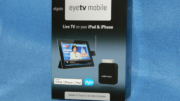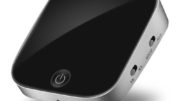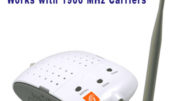When it comes to cell phone signal boosters, there are 50-ohm ones and 75-ohm ones. Conventional wisdom is that 75-ohm boosters are better for consumers. The cable is thinner and therefore easier to put through walls. 50-ohm ones are better for commercial applications because the 50-ohm cable has less loss over distance.
In reality there isn’t a huge difference if you’re talking about a smaller installation like a home. I tend to recommend 75-ohm boosters for home use just because the cable is easy to get, and you might actually have some in your walls that could be used. If you are doing a larger system with multiple antennas, the 50-ohm versions are really going to benefit you.
But what about the antennas?
You will find that a lot of commercial-grade cellular antennas are 50-ohm antennas with an N connector. You’ll find a smaller selection of 75-ohm antennas. You can use an adapter like this one to change the N connector to an F connector, but is that going to work?
According to the manufacturers, it will. In the past, Wilson and SureCall sold expensive transformers that changed the impedance of the signal from 50 to 75 ohms. Now they simply recommend the use of the adapter. I set out to find the truth as best as I could measure it, using the Wilson/CellLinq signal meter.
My testing experience
I happen to have two very similar cellular antennas on my test bench. Both are yagi antennas, but one is a 75-ohm antenna and one is a 50-ohm antenna. In this case, because the CellLinq device is actually expecting a 50-ohm antenna, I’m testing the conversion from 75 to 50. The results should be the same.
In my testing, I found that the 50 ohm antenna delivered about 2dB more gain. In both cases I was using an adapter to connect to the meter. In the case of the 50-ohm antenna it was N to SMA, and in the case of the 75-ohm antenna it was F to SMA. So none of that was attributable to extra adapters.
I have to conclude that using an antenna with the wrong impedance will lose you about 2dB. That’s not a lot, but it is something. However, since the older transformers claimed to lose 1dB during the translation, the real difference between using a transformer and not using one seems to be 1dB. That’s less than I thought it would be.
Bottom line
When you’re amplifying weak signals, every dB is precious. So you should absolutely use the right antenna whenever you can. However, if you need to use an antenna with the wrong impedance, do it. My testing seems to show that it won’t hurt you as much as you’d think. And of course, shop at Solid Signal for the cellular antenna you need for your installation. If you’re not sure which antenna to choose, call us at 888-233-7563 and we’ll be happy to give you plenty of guidance!





